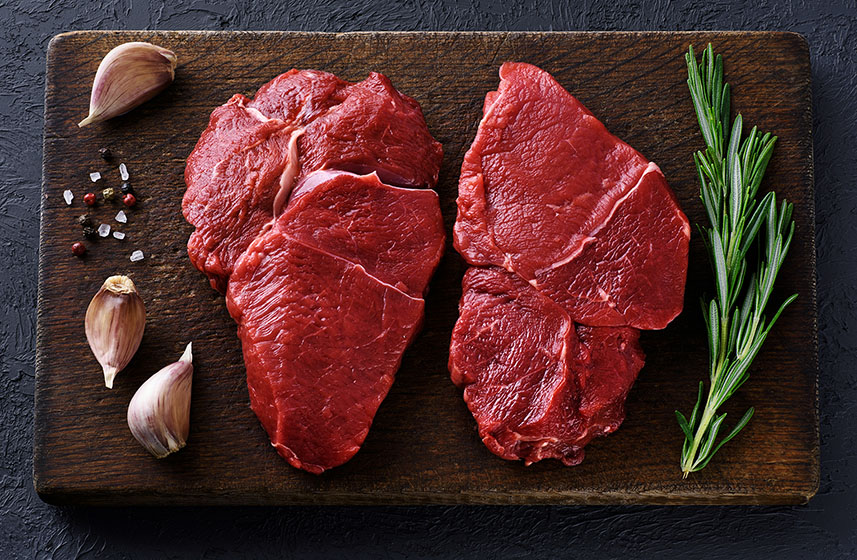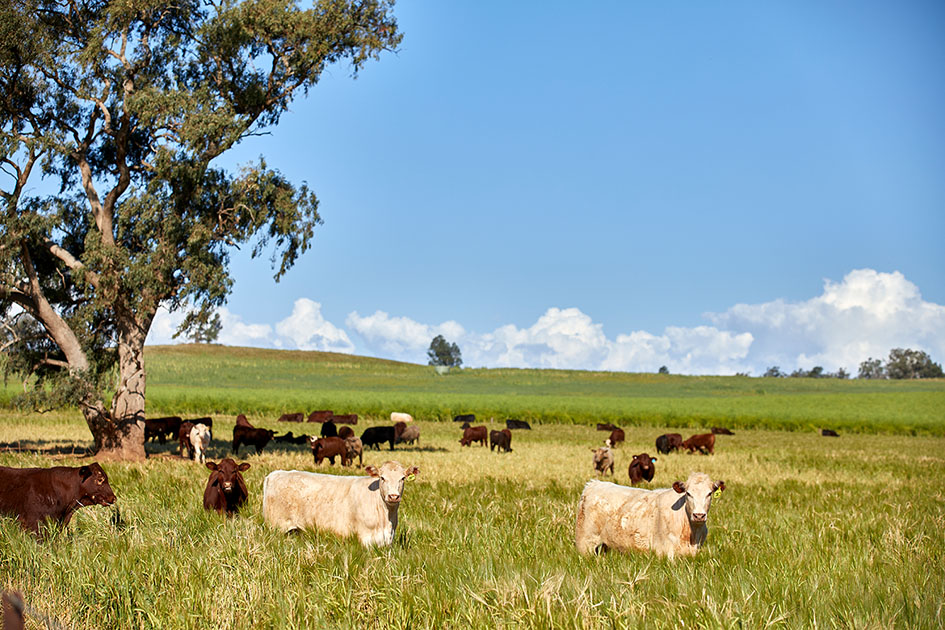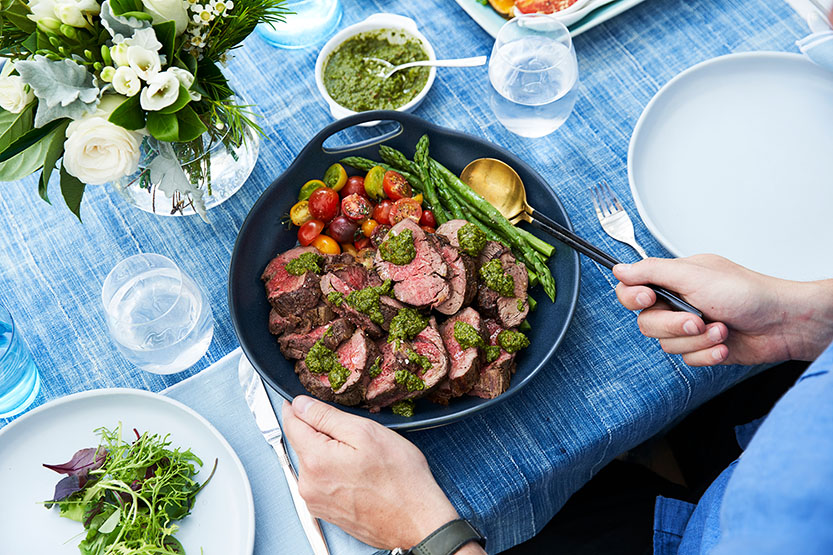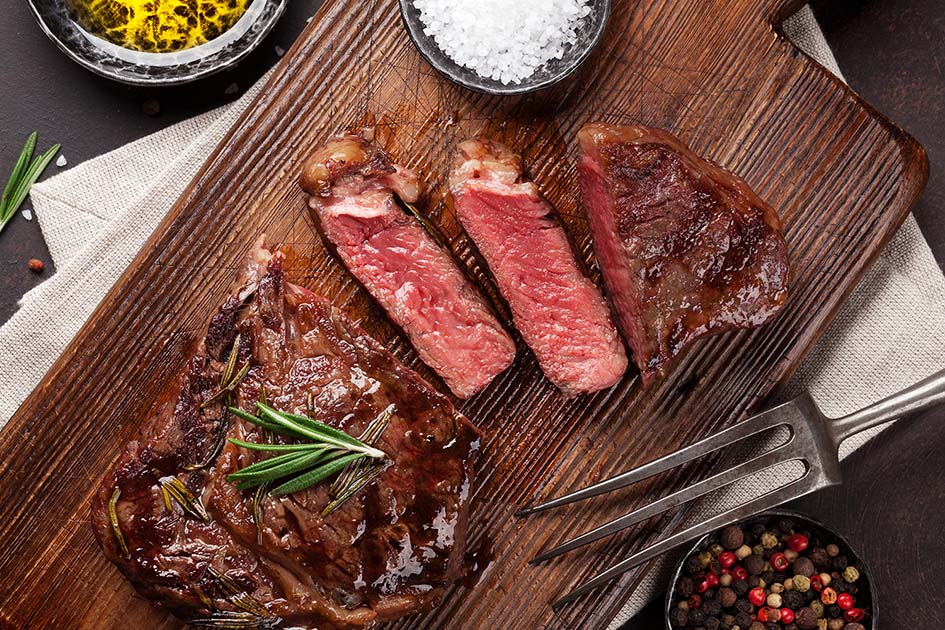The Beauty of Grass- and Grain-Fed Beef
Australian grass-fed vs grain-fed beef: which would be your next beef choice?

The Beauty of Grass- and Grain-Fed Beef
When it comes to choosing the right beef, we all have our own preferences on the different cuts, grades, right down to the cooking methods. One question that often draws heated debates among beef aficionados is whether grass-fed or grain-fed beef is the better choice.
Die-hard fans of grass-fed beef tout its excellent texture while grain-fed beef enthusiasts sing praises about its buttery flavour. With the help of four culinary experts from across the regions - Samuel Burke from Australia, Pichaya “Pam” Utharntharm from Thailand, Chandra Yudasswara from Indonesia, and Ciaran Armstrong from Singapore - we give you the lowdown on the two types of Australian beef and how to cook them well.

Demystifying Grass-fed vs Grain-fed Beef
As their names suggest, Australian grass-fed beef comes from cattle that are raised exclusively on pasture while grain-fed beef is derived from cattle that have been fed nutritionally- balanced, high-energy rations for a minimum specified number of days.
Blessed with wide open spaces, a natural environment and unique climate, Australian cattle roam on protected pastures because a less stressful life produces higher quality meat. Most cattle are raised exclusively on pasture with “around 97% of Australia’s 26 million cattle are located on pasture based properties and stations,” shares Samuel, who is the Product & Business Development Manager and Corporate Chef of Meat & Livestock Australia.
Here’s a lesser known fact: Even “Australian grain-fed cattle spend 85-90% of their lives on pasture”, he adds, before they are led to feedlots, a managed facility where livestock are provided a balanced and nutritious diet for the purpose of producing beef that’s consistent in quality and quantity. While the term grain-fed may conjure up mental images of cattle being held in feedlots for extensive periods of time, Samuel shares that the average time cattle spent in Australian feedlots is actually 95 days.
Feedlots are also highly beneficial and necessary in maintaining a consistent supply of quality beef all year round. Not only do feedlots “feed livestock during Australia’s dry seasons when pastures don’t have enough nutrients to support animal growth and welfare”, Samuel says, but they also help “to meet demand from customers who require a product which can be consistently supplied year-round, of a particular quality, and with a grain-fed flavour”.

So What’s At Steak Here?
As a general rule, “grass-fed tends to have a robust, earthy flavour while grain-fed is juicer and generally more tender”, shares Pichaya “Pam”, chef-owner of Chef Table by Chef Pam and one of the Chef-Ambassadors for Meat & Livestock Australia based in Thailand.
Due to a staple diet of grass, Australian grass-fed beef is said to “have a more intense flavour and stronger, natural taste”, says Ciaran Armstrong, Executive Chef of The Halia. The fat colour of grass-fed beef also differs but tends to be more yellow or creamy in appearance when compared to grain-fed beef. Samuel explains that this is due to the intake of carotene, a natural pigment found in plants, and some breeds are genetically more susceptible to yellow fats.
Although the controlled feeding regime of Australian grain-fed cattle tends to result in a more consistent product and better marbling that contributes to improved tenderness, juiciness and flavour, Samuel shares that there are many other factors at play, such as the time on feed, breed, climate, feedlot size and market requirements.
Whether you opt for grass- or grain-fed beef, Samuel advises to check the colour and marbling when shopping for beef cuts. Ensure that they are bright and pinkish-red in colour, and have a nice amount of marbling (flecks of fat inside the muscle), which are indicators of tasty and juicy meat.

Cooking Your Beef: Tips and Tricks From Top Chefs
As grass-fed beef is naturally leaner, the chefs advise against overcooking it. “Cooking grass-fed meat is trickier because it’s easier to overcook the steak and dry it out”, Ciaran says. “The trick is to have a golden crust while still maintaining a pink middle”, Pam adds.
For that enviable crust and juicy centre, Chandra Yudasswara, Restaurateur and one of the Chef-Ambassadors for Meat & Livestock Australia based in Indonesia, says home cooks should “ensure that the pan or grill must be really hot to sear the beef” and warns not to overcrowd the pan with too much beef as it can lower the temperature. Using a cast-iron pan would be most ideal to get consistent heat transfer to achieve a nice crust. Particularly in Indonesia where thinner cuts of beef are preferred, home cooks would also need to turn the meat quickly to prevent overcooking.
One of the most popular home-cooked dishes in Thailand and a favourite of Pam’s is Thai stewed beef (เนื้อตุ่น). When preparing it, Pam opts for grass-fed beef “because it gives the broth a very beefy aroma and intense beef flavour. Low fire cooking ensures that the beef is tender but not dry. Similarly, Chandra’s favourite way to prepare beef is to braise them or as a soup over low temperature so that the meat retains its shape.
At The Halia, Wagyu Petit Tender is grilled evenly over coal and finished on the grill for a light crust. For extra flavour and consistent juice distribution inside the meat, Ciaran rests the meat in temperature-controlled beef fat.
Ultimately, the question on Australian grass- and grain-fed beef is not over which is more superior. Rather, each type of beef has its own merits, unique texture and flavour. Whipping up a meaty feast will be a breezier experience once you test out the pro tips shared by the chefs.

